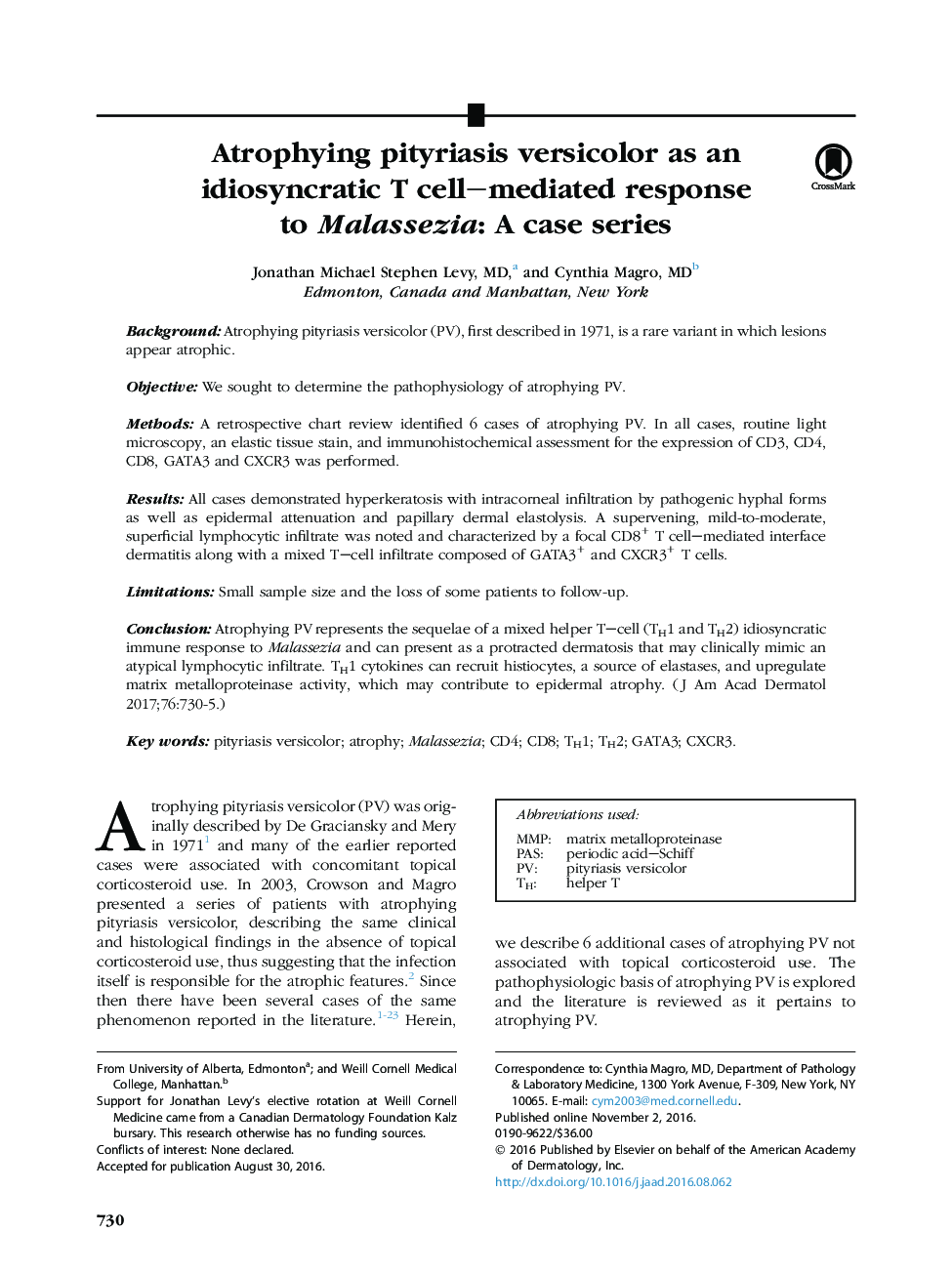| Article ID | Journal | Published Year | Pages | File Type |
|---|---|---|---|---|
| 5648135 | Journal of the American Academy of Dermatology | 2017 | 6 Pages |
BackgroundAtrophying pityriasis versicolor (PV), first described in 1971, is a rare variant in which lesions appear atrophic.ObjectiveWe sought to determine the pathophysiology of atrophying PV.MethodsA retrospective chart review identified 6 cases of atrophying PV. In all cases, routine light microscopy, an elastic tissue stain, and immunohistochemical assessment for the expression of CD3, CD4, CD8, GATA3 and CXCR3 was performed.ResultsAll cases demonstrated hyperkeratosis with intracorneal infiltration by pathogenic hyphal forms as well as epidermal attenuation and papillary dermal elastolysis. A supervening, mild-to-moderate, superficial lymphocytic infiltrate was noted and characterized by a focal CD8+ TÂ cell-mediated interface dermatitis along with a mixed T-cell infiltrate composed of GATA3+ and CXCR3+ TÂ cells.LimitationsSmall sample size and the loss of some patients to follow-up.ConclusionAtrophying PV represents the sequelae of a mixed helper T-cell (TH1 and TH2) idiosyncratic immune response to Malassezia and can present as a protracted dermatosis that may clinically mimic an atypical lymphocytic infiltrate. TH1 cytokines can recruit histiocytes, a source of elastases, and upregulate matrix metalloproteinase activity, which may contribute to epidermal atrophy.
